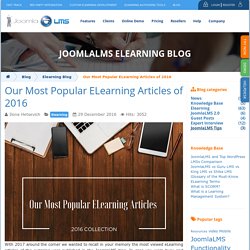

Blended & Online Courses. Universal Design for Learning - Copy. Rubrics & Assessment. Engaged Learning. Motivating Students. Memory & Learning. Evaluations. Multimedia Principles for Teaching & Learning. Building a PLN. Creative Commons Info. Ed-tech Tool Checklist. Kathy Schrock's Guide to Everything - Home Page. Improving Presentations. Mentoring Grad Students. Evaluating Information - Evaluating Information - Research Guides at Western New England University. Primary sources differ between disciplines.

In general, they are the original information, data, words, thoughts, images, laws, or conversations of individuals or collaborative groups. In the sciences primary sources are articles, reports, and data that present new research or a new approach to an established subject. Research articles that present new knowledge in the discipline are considered primary research sources. In literature, primary sources are considered the original works of literature. These sources can include novels, poetry, newspaper articles, blogs, tweets, web sites, films, songs, television shows. In history primary sources are the artifacts of the time period being investigated. Multiliteracies Expanding the Scope of Literacy Pedagogy The term ‘Multiliteracies’ refers to two major aspects of language use today.

The first is the variability of meaning making in different cultural, social or domain-specific contexts. These differences are becoming ever more significant to our communications environment. This means that it is no longer enough for literacy teaching to focus solely on the rules of standard forms of the national language.
Rather, the business of communication and representation of meaning today increasingly requires that learners are able figure out differences in patterns of meaning from one context to another. The second aspect of language use today arises in part from the characteristics of the new information and communications media. Next. Google+ E Learning Articles of 2016. With 2017 around the corner we wanted to recall in your memory the most viewed eLearning articles of the outgoing year published in the JoomlaLMS blog.

In case you were busy and didn’t have time for reading, here is the Top Five eLearning articles of the year. Please enjoy! Top Experts Predict What Will Transform ELearning in 2017 ELearning is a rapidly evolving and constantly changing field that is never at a stop. A few years ago eLearning was perceived as an innovative way of studying. Haven’t you been curious of the changes that will transform the eLearning field next year or next decade? We have! That is why we asked eLearning experts, teachers, educators, analysts, professors and founders of learning societies and blogs to express their opinions on the innovations that will transform the way we teach and learn in 2017. And we got pretty interesting answers, by the way! Continue reading The Secret of an Effective ELearning Course [Infographic] Evoking Emotion for Learning. Learning isn’t merely cerebral.

It’s emotional, too. Researchers, in fact, have confirmed how emotions affect mental processes. They finally found the missing piece of the learning puzzle and even encouraged instructional designers to include positive emotions as an important learning factor. You don’t have to be an expert on the subject to see the benefits of projecting the right emotions among learners. It’s simple, really. Emotions, therefore, are too entrenched in the learning processes that you can’t ignore them and pretend they’re not important. So trigger the right emotion and use it to help students learn better and complete the eLearning course. Use Good Typography In the Aesthetics of Reading study, researchers found that good typography leads to good mood. Typography, especially clean clear and simple fonts, projects certain emotions such as consistency, trust and confidence. Fonts have human-like personalities too.
Besides typography, consider the size and color of texts. GoogleMapsApp StepbyStepInstructions.